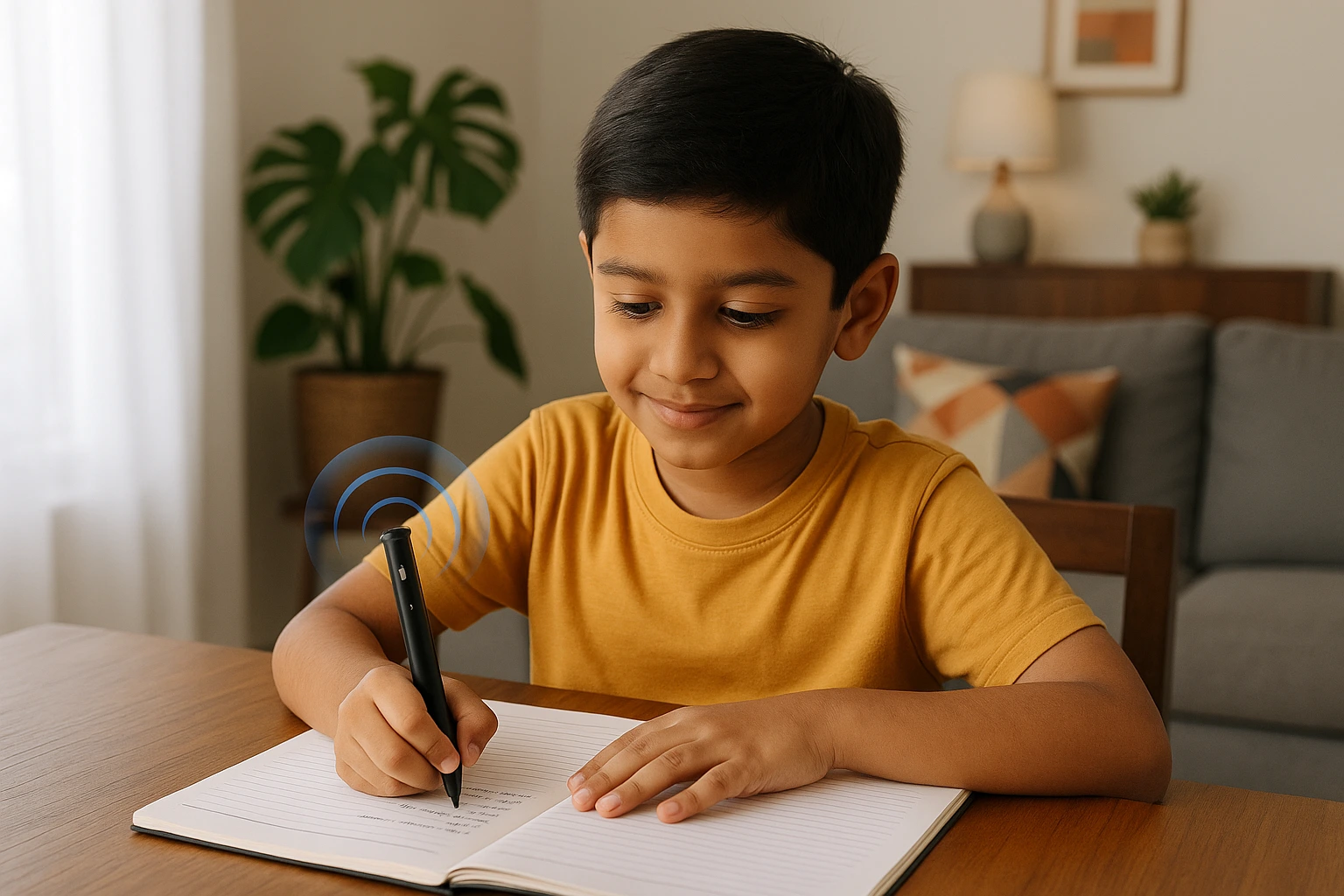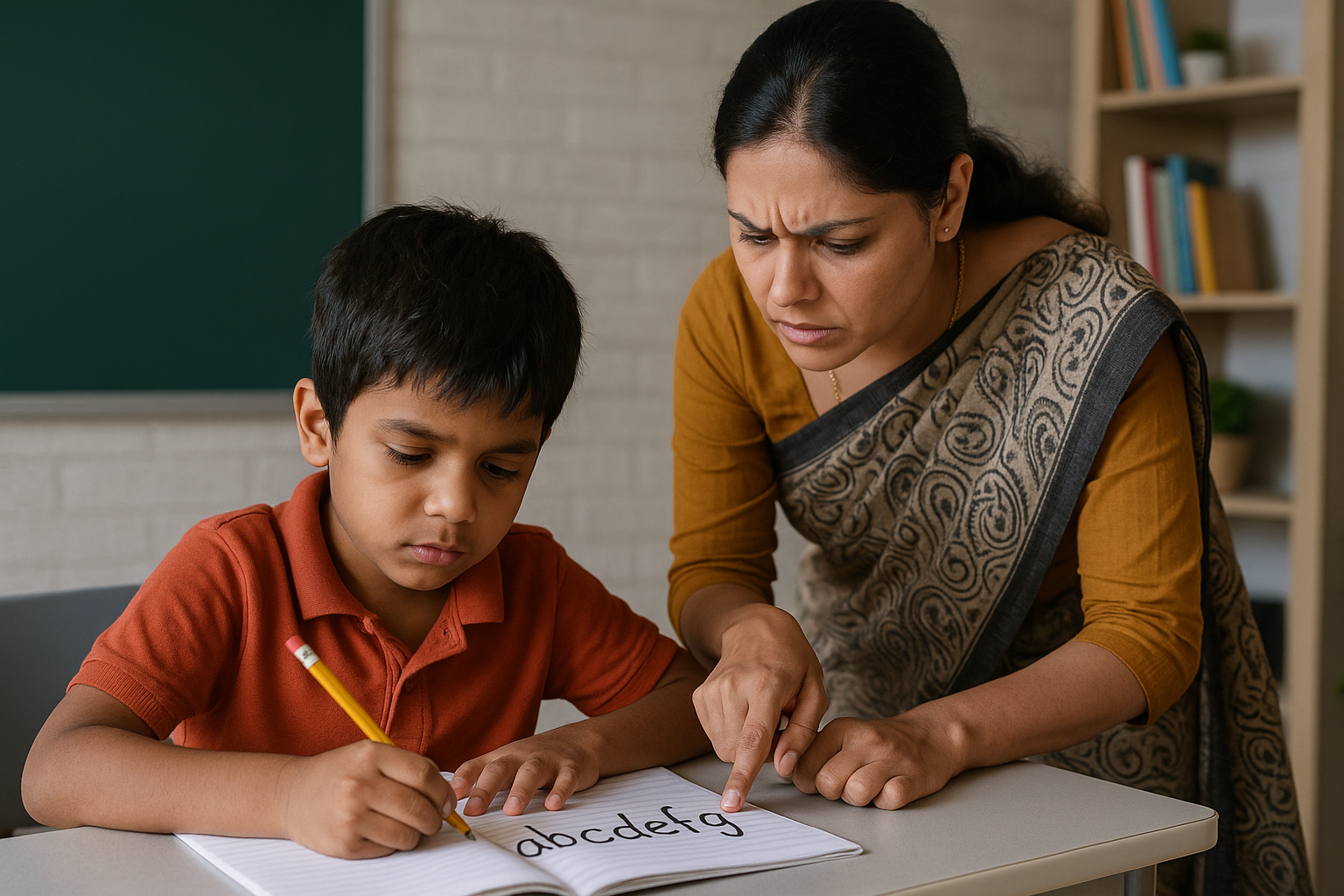What is Dysgraphia Meaning?
What is Dysgraphia Meaning?
Dysgraphia Meaning is inability to write due to learning difficulties. This may include spelling and even translating thoughts onto paper. Despite one’s cognitive feats, the aforementioned difficulties, along with many others of equally severe complexities, are significant to both children and adults.
In popular terms, poor handwriting isn’t the only issue. Severe difficulties in the realm of fine motor skills, sentence construction, and even writing can all be covered. These difficulties are aligned with the meaning of the term dysgraphia. Help can only be sought if parents, teachers, and caregivers realize the complexities of the issue in a timely fashion.
Table of Content
What Causes Dysgraphia?
Dysgraphia Meaning, a learning disorder, arises from poorly developed motor skills, due to which the hand movements, especially fine motor skills, are severely impacted. Dysgraphia can occur due to several reasons, ranging from physical brain injury and genetic reasons. Understanding the causes of dysgraphia helps to find the ideal solutions to address them and facilitate the child’s learning.
Common Causes of Dysgraphia:
Neurological Factors
Dysgraphia is typically a consequence of variations between how the brain interprets written language and motor skills. These neurological variations can disrupt writing smoothness and letter generation.
Developmental Delays
When the child does not attain certain age-related milestones, especially of motor skills, for e.g., when the finger grip over the pencil is not strong enough or poor hand movement can be signs of dysgraphia.
Genetic Reasons
Dysgraphia has a greater chance of running in families, implying that if one sibling or a parent has dysgraphia, the sibling or the child has high chances of possessing dysgraphia.
Dual Disorder Conditions
Dysgraphia can be a co-existing condition that may arise out of a previous disorder, such as ADHD, weakening the focusing ability weaken making writing challenging.
Accident or brain injury
Dysgraphia can also arise after a physical injury that has affected the brain, especially the areas that control language and motor skills.
Understanding the prime reasons for dysgraphia helps to initiate and implement appropriate educational interventions that help to eradicate any other ill effects of the disorder that affect a child’s overall well-being.
To download the brochure of the LD Course, Click Here!
For more details on the LD Course, Call / WhatsApp at +919321024137 / +919869866277

Does Dysgraphia Occur Alone or with Other Specific Learning Disabilities?
Dysgraphia, a learning disorder, impacts the ability of the individual to use their fine motor skills, mainly affecting the writing skills. It can be a single disorder that the child possesses, or it can be a co-existing condition with some other disorder.
Dysgraphia by itself hampers the abilities that involve writing, spelling words, and organizing thoughts on paper, but there is are high chance of it occurring with other disabilities as well.
Independent Dysgraphia
Some children or adults may only face difficulties with writing tasks. Their reading, attention, and reasoning skills may be unaffected, making dysgraphia the sole concern.
Dyslexia and Dysgraphia
Dysgraphia and Dyslexia are noted to co-exist which means there chances of a child having dysgraphia and dyslexia together is a strong possibility.
ADHD and Other Conditions
ADHD individuals are also diagnosed with Dysgraphia in many cases, as ADHD affects the attention span of the child, hampering their ability to focus and complete tasks on time, leading to unfinished tasks. As in many cases, learning challenges frequently overlap; a detailed evaluation is essential.
Getting a detailed analysis helps to identify all the issues that are influencing the child’s progress, enabling educators and special educators to devise plans that align with the child’s learning preferences.
To download the brochure of the LD Course, Click Here!
For more details on the LD Course, Call / WhatsApp at +919321024137 / +919869866277
Source: freepik
Why is the Diagnosis of Dysgraphia and Related Learning Disabilities Important?
Disorders such as dysgraphia, if detected early alongside associated learning disabilities, can promote the academic and emotional growth of a child. Students who undergo this ordeal can be overlooked and wrongfully branded as lazy or indifferent without the right support.
Important Aspects why this should be diagnosed:
Proactive measures
Diagnosing a child’s problem early can assist in timely, suitable active interventions in the form of occupational therapy, specific handwriting programs, or tailored learning pathways.
Differentiation of Instruction
Once the learning block is identified, the academic approaches of the given child can be modified, e.g., the child can be given oral assessments or the learning may be facilitated with assistive technology.
Emotional Wellbeing
Not being able to complete tasks on time leaves the child clueless and feeling frustrated, not knowing the reason for his slow progress, leading to low self-esteem and anxiety. When assistance is offered to the child, it helps him address his challenges, helping him regulate his emotional turmoil.
Understanding Strengths and Weaknesses
Not only does the child gain a disposition that is favorable to himself, but the family and the school as well. Strengths and weaknesses analysis of the child can help family and school members integrate their efforts more efficiently.
Provision of Special Support Interventions
Children with learning disabilities are entitled to a list of benefits under many educational policies that includes concessions in the form of time, or taking the aid of a writer for important exams. So when the student is diagnosed by a certified professional, he can definitely take advantage of the above provisions.
Identifying early signs of dysgraphia helps to get a formal diagnosis for the child at an early age, which helps to provide the child with tailored learning methods and support for their overall development and academic progress.
What Kinds of Instructional Activities Improve the Handwriting of Children with Dysgraphia?
Children with dysgraphia suffer from poor fine motor skills; therefore, structured activities that boost the child’s fine motor skills have to be practiced regularly that gradually improve their writing skills. Practicing daily activities such as tracing letters, art, and craft activities fosters writing skills and reduces the writing stress the child faces. With consistent and innovative activities, the child is engrossed in learning and retains information for a longer span.
Multi-Sensory Writing Techniques
Using sand, clay, or textured paper helps children feel letter shapes, supporting muscle memory. These hands-on tasks improve writing fluency over time.
Tactile cards and in-air pointer finger tracing
Systematic tracing of letters on tactile cards, or tracing the letter in the air with the help of a pointer finger, helps to reinforce the formation of letters.
Use of Lined or Grid Paper
Paper with visual boundaries supports alignment and proportion, reducing illegibility.
Promoting Fine Motor Skills
Incorporating simple activities such as tearing and sticking paper, opening and closing of bottle lids, helps in strengthening the fine motor skills that promote better handwriting.
Technology Support
Introducing typing and assistive writing tools reduces frustration and helps children express themselves clearly.
Vidhyanidhi Education Society offers a Learning Disability Course that trains educators to implement these strategies effectively. Pursuing this top-notch Learning Disability Course trains candidates in exclusive strategies and practical classroom management skills that help them create a conducive learning atmosphere for all children, assisting them in thriving in academics as well as their social environment.
Empower special children with the right strategies! Join Vidhyanidhi Education Society’s LD Course today!
To download the brochure of the LD Course, Click Here!
For more details on the LD Course, Call / WhatsApp at +919321024137 / +919869866277
What is Dysgraphia Meaning?
FAQs
At What Age is Dysgraphia Diagnosed?
The signs of Dysgraphia appear when the child starts preschool and has issues with basic writing skills or poor fine motor skills, and is diagnosed between around ages of 6–9.
Who Tests a Child for Dysgraphia?
Certified professionals, such as psychologists or learning disabilities experts who have undergone thorough training under a Special Ed program, can test a child for Dysgraphia.






